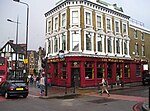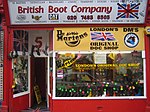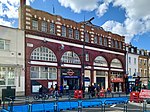Blow Up (club night)
Blow Up is a club night that was founded in the early 1990s by promoter and DJ Paul Tunkin at a North London pub called "The Laurel Tree". The night quickly became the centre of the emerging Britpop scene in Camden attracting long queues of people eager to gain entry to the tiny venue. Early regulars included members of Blur, Pulp, Elastica, Suede, The Buzzcocks, Huggy Bear and The Jesus and Mary Chain, leading to the club being referred to as the place where "Britpop was born".The style of Blow Up and its audience has been noted as an early influence on, and instrumental in, the later mid-Nineties explosion of the Britpop scene in the UK and abroad, with Time Out calling it the "breeding ground" of the Britpop sound. John Best said that "not only do British bands look like Jarvis now, so do fashion models. It's global and I think it started at Blow Up." The Guest List called it "the night that spawned a thousand bands".
Excerpt from the Wikipedia article Blow Up (club night) (License: CC BY-SA 3.0, Authors).Blow Up (club night)
Bayham Street, London Chalk Farm (London Borough of Camden)
Geographical coordinates (GPS) Address Website Nearby Places Show on map
Geographical coordinates (GPS)
| Latitude | Longitude |
|---|---|
| N 51.5384 ° | E -0.1409 ° |
Address
BrewDog (BrewDog Camden)
Bayham Street 113
NW1 0AG London, Chalk Farm (London Borough of Camden)
England, United Kingdom
Open on Google Maps









